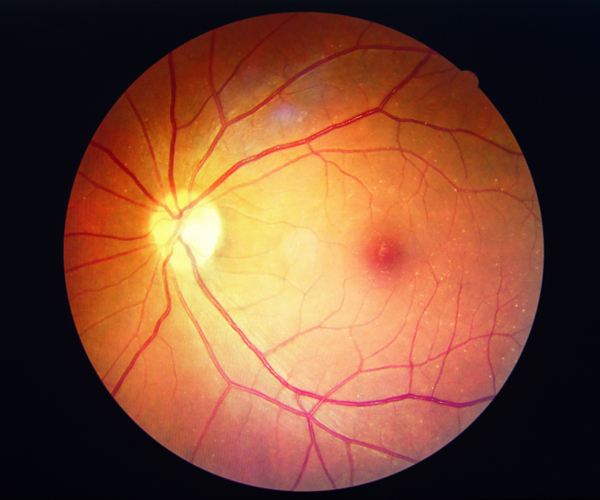Spotting the signs of diabetic retinopathy

Most Americans over 40 don’t know the signs of diabetic retinopathy, a new survey finds.
The condition affects nearly 8 million Americans, and that number is expected to double by 2050, but most adults don’t know facts about diabetic retinopathy that could help save their sight.
The survey of 1,000 U.S. adults by the American Society of Retina Specialists (ASRS) found 47% didn’t know that blurry central vision can be a symptom of diabetic retinopathy and only 37% knew that seeing spots or floaters is a symptom. Most people knew that type 1, type 2, or gestational diabetes puts patients at risk of diabetic retinopathy, but other risk factors weren’t as well-known.
Of those polled, 64% did not know that high cholesterol increases the risk of diabetic retinopathy, and 48% didn’t know that high blood pressure is a risk factor.
“Diabetic retinopathy is a preventable cause of blindness, so early identification and treatment is critical,” said Dr. Carl Awh, president of the ASRS.
“All health care providers who care for diabetic patients should emphasize the importance of controlling known risk factors and the need for regular dilated retina examinations to identify diabetic retinopathy at an early stage,” Awh said in a society news release.
“Many patients with sight-threatening diabetic retinopathy have excellent vision and no symptoms, which is the ideal time for a retina specialist to begin treatment. Diabetic patients with vision loss or symptoms should be evaluated more urgently,” he advised.
Other risk factors include:
- Having diabetes for a long time.
- Poor control of blood sugar levels over time.
- High blood pressure.
- Kidney disease.
- High cholesterol.
- Pregnancy.
Symptoms can include:
- Blurred or distorted vision.
- Difficulty reading.
- Spots in your vision.
- Shadow across the field of vision.
- Eye pressure.
- Difficulty with color perception.
Protect your vision by:
- Controlling blood sugar, blood pressure and cholesterol.
- Maintaining a healthy weight.
- Taking diabetes medications.
- Getting regular retina exams.
- Quitting smoking.
- Staying active.
“Advances in early detection and treatment of diabetic eye disease made possible by retina specialists can preserve sight and virtually eliminate vision loss,” ASRS Foundation President Dr. Timothy Murray said in the release. “If you have diabetes and experience issues with your sight, partner with a retina specialist for expert care that can prevent, treat or reverse damage to the retina from diabetes.”
© HealthDay
For more on this story go to: NEWSMAX





